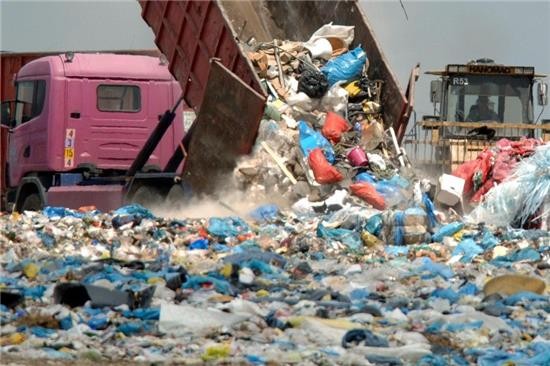Landfill taxes – Dedicated green taxes to reduce waste sent to landfill
Landfill taxes are already widely spread fiscal measures across Europe. They help reduce the amount of waste sent to landfill and mitigate harmful environmental effects. Additionally, landfill taxes provide incentives to use more sustainable solutions of waste management, such as waste reduction and prevention, recovery or recycling. The instrument can bring about large tax revenues and lead to a significant decrease in the number of landfill sites a country has – for instance in the UK by two thirds in eight years.

The challenge
Following the waste hierarchy, landfill or disposal of waste is the least preferred step in its management. With the aim to extract the maximum practical benefits from products and to generate the minimum amount of waste, steps of the hierarchy such as energy recovery, recycling, reuse, and minimisation are preferred. The hierarchy’s most favoured option is the prevention of waste. The EU Landfill Directive is a major driver to reduce landfilled waste.
The measure
18 EU Member States as well as Switzerland and Norway haveintroduced a tax instrument for waste sent to landfills. The tax is typically levied in units of currency per unit of volume or weight. The tax implies an additional payment on top of the regular costs for sending waste to landfill.
Landfill taxes are successful in mitigating the environmental impacts related to waste disposal, such as contamination of groundwater or soil, methane emissions from decaying organic waste, or other nuisance such as odor, vermin or noise. At the same time the tax provides incentives for alternative and more sustainable ways of waste disposal. The tax applies mostly to construction and inert waste as well as residues, hazardous and biodegradable waste. In addition to the tax, several countries have a ‘landfill ban’ that indicates how much of a certain type of waste may be landfilled.
In these countries the tax is collected by tax and custom authorities, environmental agencies or municipalities. Landfill taxes generated total revenue of around EUR 2.1 billion in 2009/2010 for the countries and regions that applied them. The use of the revenues from landfill tax differs greatly per country; besides going directly to the state or regional budget, revenues are used for waste management, cleaning up of contaminated sites or other environmental measures.
The example of the UK demonstrates a continuously increasing tax level. The standard landfill tax rate increased by £8 per tonne/year to reach £80 in 2014 when it remains constant until 2020. In 2008/09 the UK had around 450 landfill sites compared with 1,200 in 2001. The Business Resource Efficiency and Waste Programme (BREW, 2005-2008) had been conceived to reinvest part of the landfill tax revenue.
Lessons learnt
Landfill taxes are a strong driver to divert waste from landfills. The administration of the tax is straightforward and it seems particularly useful for homogenous waste types, e.g. construction and demolition waste. The revenue appears to decrease over time because the tax has created incentives to divert waste to better waste management types than landfill.
Further deployment
Landfill taxes are estimated to be BEYOND 9 on the GML scale. The concept has been implemented on full scale and assessed positively. It is deployed to various countries. The UK for instance put in place a “Landfill Tax Credit Scheme”, plus a “Landfill Allowance Trading Scheme” for biodegradable municipal waste (BMW). The concept of green taxes and schemes is applied to other areas (e.g. Climate Change levy, Aggregates levy).
Links:
European Topic Centre on Sustainable Consumption and Production (2012). Overview of the use of landfill taxes in Europe. ETC/SCP working paper 1/2012
